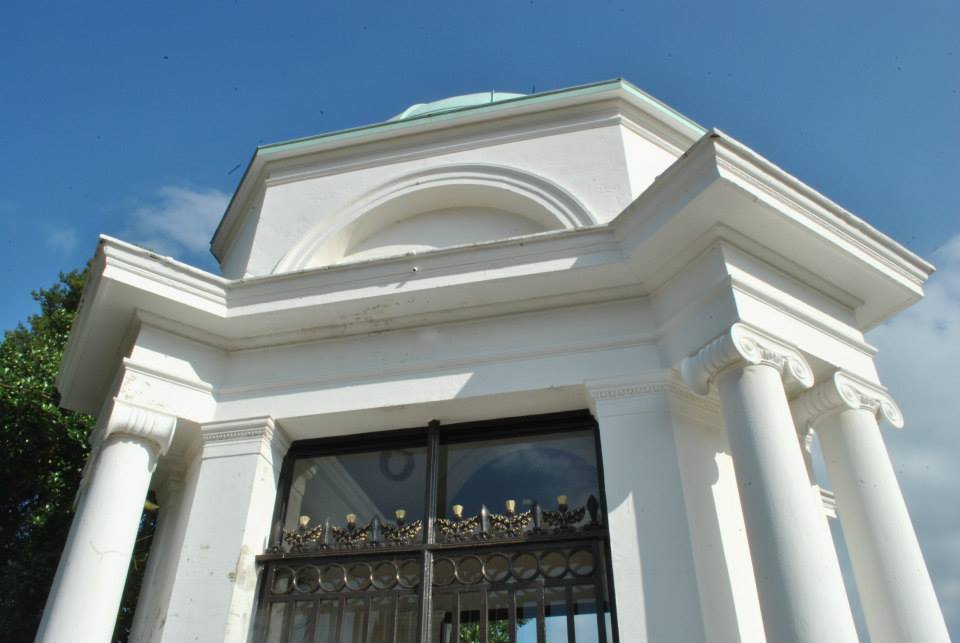He’s our best-loved son, his words have touched the hearts and minds of people the world over, and today 25th January, Scots everywhere are raising a glass to mark the birthday of Robert Burns. And it’s likely wherever you enjoy your Burns celebrations you won’t be too far from a lasting memorial to the National Bard. That’s because there are more statues, monumentsand memorials dedicated to Robert Burns than any other non-religious figure, after Queen Victoria and Christopher Columbus.
During the Year of History, Heritage and Archaeology 2017 , VisitScotland is challenging visitors and residents alike to follow in the world-renowned poet’s footsteps and come face to (stone) face with some of the country’s best-known Burns tributes.
From Aberdeen to his final resting place in Dumfries, there are around twenty official Burns memorials dotted around the country, commemorating his journey from Ayrshire to ‘Auld Lang Syne’.
Ayrshire: Where it all began…
Welcome to Burns Country! Here you’ll find almost half of Scotland’s Burns’ memorials and there is no better place to start than Alloway, where it all began for the Bard on 25 January 1759.The village is now home to the Robert Burns Birthplace Museum, operated by the National Trust for Scotland.An impressive sixty-foot, nineteeth-century memorial to Burns, designed by Thomas Hamilton, can also be found next to the local church and is just one of several nods to the ‘Ploughman Poet’ within the village.
Having spent much of his early life in Ayrshire, the region is rightly proud of its links to the literary icon. There are tributes to Burns to be found on Irvine Moor, in Ayr town centre and at the visitor centre in Eglinton Country Park. Kilmarnock, where the first edition of Burns’ poems was published, has marked his legacy with memorials at Kilmarnock Cross and in the town’s Kay Park. The Park overlooks the printing house of ‘Wee-Johnnie’ where the first edition of Burns’ poetry was produced. Until 2004, the site was home to a stunning eighty-foot red sandstone memorial designed by local sculptor Robert Sansom Ingram to house W. Grant Stevenson’s statue of Burns.The monument led to widespread interest with an estimated 50,000 people traveling to Kilmarnock for its unveiling in 1879.A fire in 2004 left the structure severely damaged; thankfully the statue survived and is housed in the new custom- built Burns Monument Centre which also incorporates the restored remains of the original monument.
Finally, make sure to pay a visit to the small village of Mauchline where Burns moved to a farm nearby following the death of his father in 1784. The striking ‘Burns Tower’, is a national memorial and the village also boasts the world’s first statue dedicated to Burns’ wife, Jean Armour.
A tour of Scotland:
During his lifetime, Robert Burns conducted tours of Scotland. As one of the country’s most famous figures, it is perhaps not surprising that many of Scotland’s cities like to celebrate their links to the National Bard. On Union Terrace in Aberdeen, you’ll find Henry Bain Smith’s stunning ten-foot bronze statue of Burns, holding his hat in his left hand and a daisy in his right – a nod the poem ‘To a Mountain Daisy’.Dundee’s memorial to the Bard was originally intended to greet visitors to the Albert Institute (now the McManus Galleries on Albert Street). Designed by Sir John Steell, a crowd of 30,000 people gathered for its unveiling in 1880.In Glasgow, Robert Burns’ standing is still clear to see thanks to George Ewing’s nine-foot bronze statue which resides in the city’s George Square alongside effigies of other influential figures such as Sir Robert Peel, Sir Walter Scott, James Watt, Robert Gladstone and Queen Victoria and Prince Albert.If you travel east towards Edinburgh you’ll find a trio of Burns tributes, commemorating the Bard’s time and influences on the Capital. It was here, where his second edition of poems was published, that Burns met many of the women who inspired his writings. The most well-known being Nancy Craig who Burns wrote ‘Ae Fond Kiss’ for.Memorials for both Burns and Nancy Craig can be found at The Writer’s Museum in Edinburgh’s Old Town. At the opposite side of town, a statue of Burns stands proudly on Bernard Street in Leith.
The Capital’s most famous Burns monument can be found on Regent Road. Designed by Thomas Hamilton, the same architect behind the Burns memorial in Alloway, the monument is well over sixty-feet tall and was originally built to house a marble effigy of Burns by John Flaxman. However, when it was discovered that the marble of the statue had been damaged, it was moved to various locations before finally, in 1889, taking residence in the Scottish National Portrait Gallery.
Dumfries: The final years…
Robert Burns spent his final years in Dumfriesshire, moving to Ellisland Farm in 1788.His presence and spirit is very much still alive within the region thanks to memorials and a host of attractions. Visitors can enjoy a dram in one of the poet’s favourite watering holes, The Globe, or gain a glimpse into his home life with a visit to the Burns House Museum or a little further afield to the tranquil settings of Ellisland Farm.
There is a clear sense of the poet’s popularity as soon as you enter Dumfries town centre thanks to the impressive statue outside Greyfriars Church. Designed by Amelia Hill, the wife of famous photographer D.O Hill, it was erected in 1892 by the town’s inhabitants. St Michael’s Churchyard represents Robert Burns’ final resting following his death on 21 July 1796, aged just 37. Originally laid to rest in a simple grave, marked only by a stone slab, his remains were moved to the Mausoleum ( Main Image) after Burns’ admirers believed this was an insufficient memorial to such an influential figure.
For further inspiration, plus more on the main man himself, check out VisitScotland’s handy Burn’s Night Guide or visit visitscotland.com/burns






